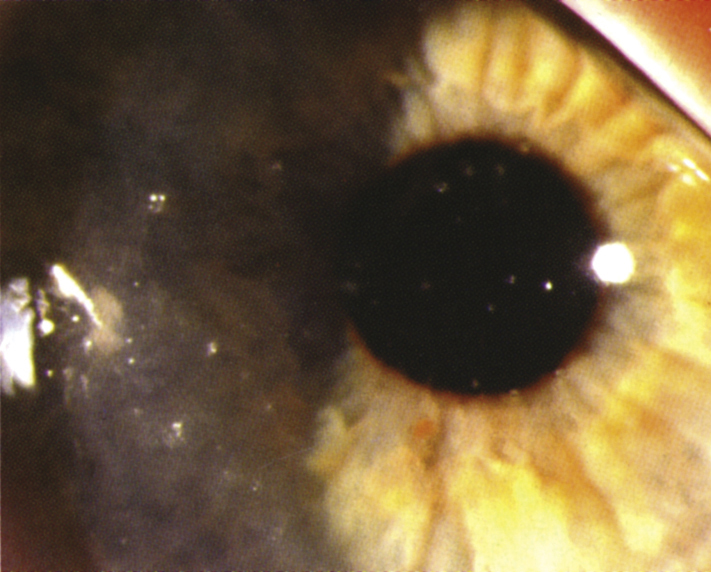Critical
Coarse stellate gray-white corneal epithelial opacities that are often central, slightly elevated, and stain lightly with fluorescein. Underlying subepithelial infiltrates may be present (see Figure 4.8.1).
Other
Minimal-to-no conjunctival injection, corneal edema, anterior chamber reaction, or eyelid abnormalities.
